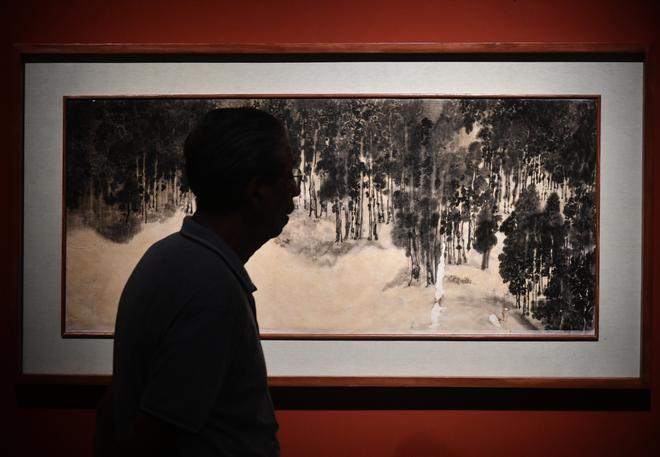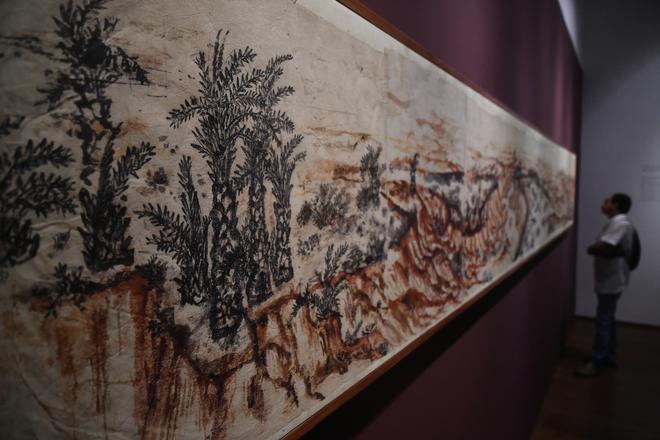Bengali artist Benode Behari Mukherjee told filmmaker Satyajit Ray, his former student at Santiniketan, when he was working on The Inner Eye, a documentary on the artist: “If you wish to look for my spirit, the basic essence of all that my life stands for, you will find it in the khoai. You could say, I am it.”
The khoai, geological formation often in the shape of tiny hills, found in Birbhum, Bardhaman and Bankura districts of West Bengal, held deep significance for the artist. He saw a reflection of himself in it and he painted the khoai in great detail.
His khoai handscrolls are on show at the Durbar Hall Art Gallery, along with other works that showcase his artistic essence. The khoai handscrolls, on the first floor of the gallery, have been displayed in long stretches, which allow viewers to walk along observing it just as if they were walking along the physical landscape. Painted in tempera on Nepalese paper in the 1930s, the work in sepia, burnt red, black and cream is an indication of his connection to his surroundings. Benode Behari taught at Visva-Bharati University at Santiniketan and spent most of his creative life there.

A window to Santiniketan
The show, organised by the Kolkata Centre for Creativity in collaboration with the Kerala Lalithakala Akademi and Gallery Rada, has a collection of his rare handscrolls and an early mural. It is a window to Santiniketan and life around it — the detailed paintings offering more than glimpses into the vegetation around Santiniketan, the village, and the people. “At a time when Indian artists were painting mythological and historical subjects to rig up a national and cultural identity, Benode Behari devoted himself to an intimate exploration of the place he lived in … with the place and time he lived in,” says Professor R Siva Kumar, the curator of the show in his curatorial statement.
The artist was drawn to handscrolls, which has its roots in the East Asian landscape painting tradition. Fragments from his Sal Forest paintings (ink of cloth) done in the 1930s are part of this creative phase when he worked extensively in this format, exploring its every possibility.
Born with an eye condition that deteriorated as he aged, Benode Behari continued to paint. ‘Self Portrait as a Teacher’, a detail from the mural Life on the Campus, which shows himself among his students engaged in work and his meticulous observation. This is a fresco on the wall, which was done in 1942.

The exhibition also includes a ceiling mural, which he painted on the ceiling of a dormitory verandah in Santiniketan in 1940. It represents the typical village life in the region, its flora, fauna included. A couple of Benod Behari’s self portaits are on show.
Visitors can watch a documentary on the artist on the ground floor of the gallery, while an aural narrative of the show is available on the upper floor, which can be accessed by scanning a QR code and using the headphones provided.
Scenes from Santiniketan and Benode Behari’s Handscrolls is on till September 25.







